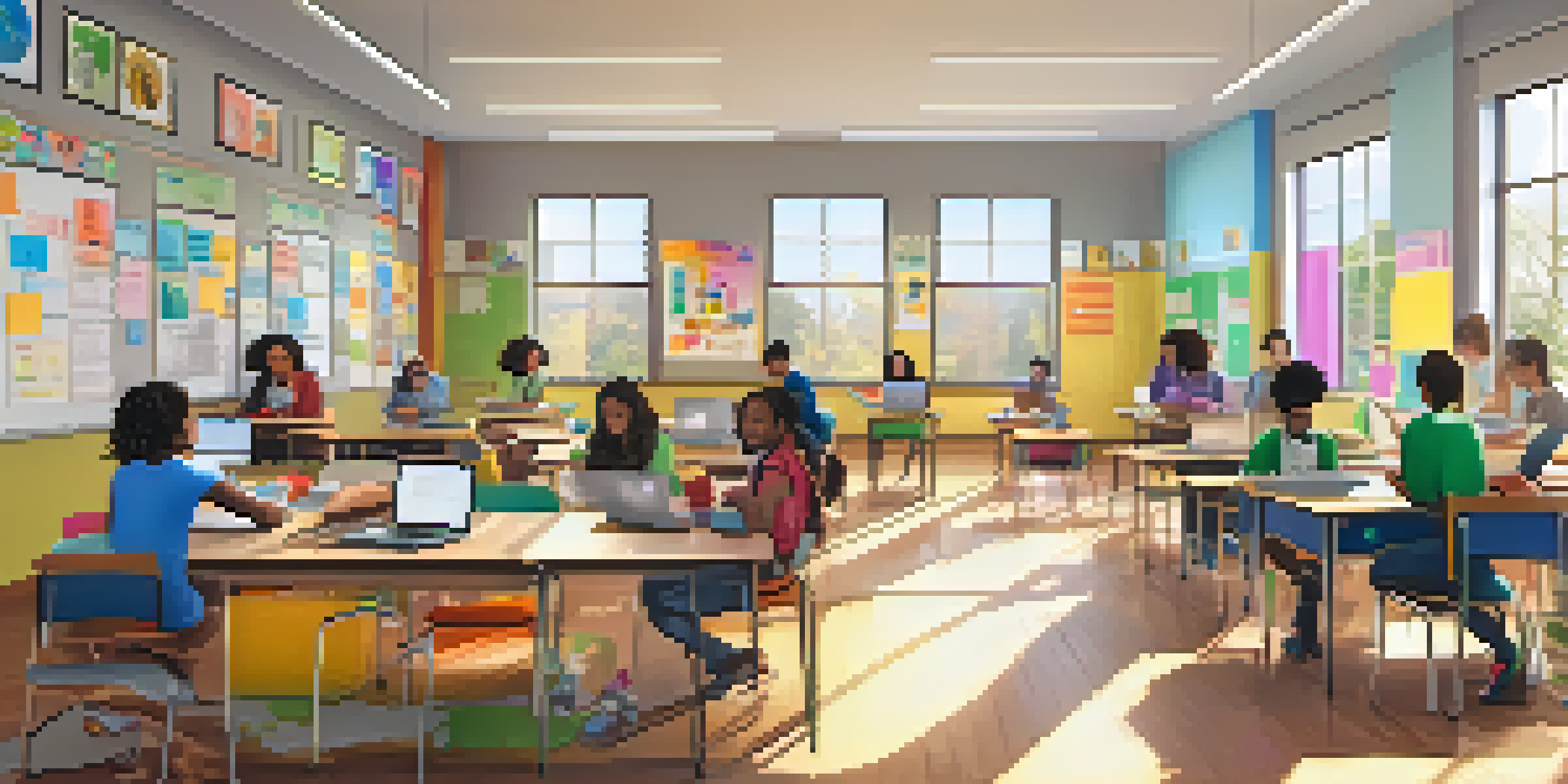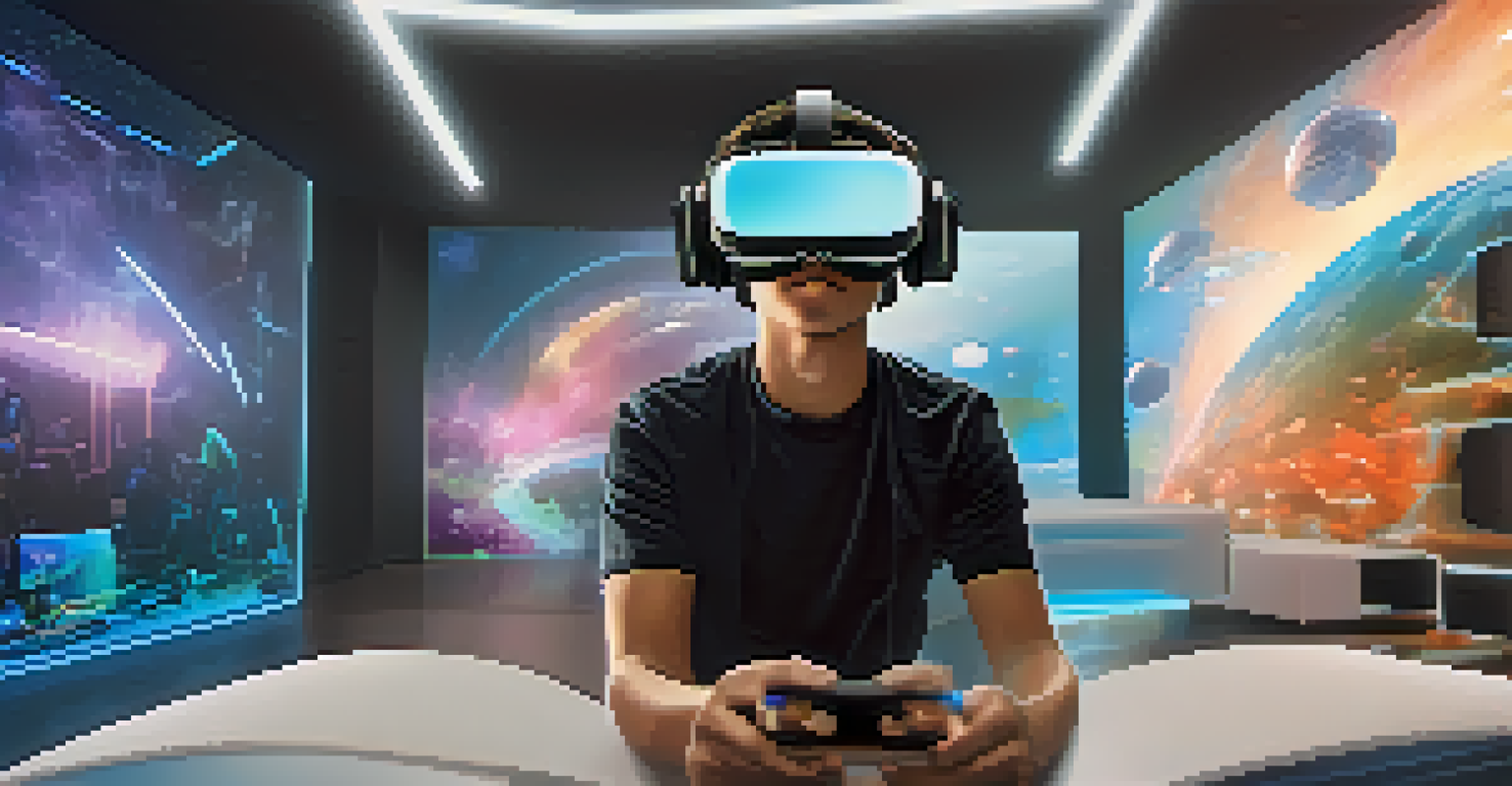Building Digital Literacy Skills Through Blended Learning

Understanding Digital Literacy in Today's World
Digital literacy is more than just knowing how to use a computer; it's about effectively navigating, evaluating, and creating information in a digital environment. In our increasingly online world, these skills are crucial for personal, academic, and professional success. By fostering digital literacy, we empower individuals to communicate, collaborate, and think critically in a digital context.
Digital literacy is not just about technology; it's about empowerment and the ability to communicate effectively in a digital age.
As technology evolves, so do the demands for digital skills. From job applications to online learning, being digitally literate means being able to adapt to new tools and platforms quickly. This adaptability not only enhances individual confidence but also opens doors to new opportunities in various fields.
Blended learning—a combination of traditional classroom teaching and online instruction—provides a dynamic environment for developing these skills. By integrating digital tools with face-to-face interaction, learners can practice and refine their digital literacy in a supportive setting.
The Role of Blended Learning in Education
Blended learning is revolutionizing education by offering a flexible approach that caters to diverse learning styles. Students can engage with digital content at their own pace while benefiting from direct interaction with educators and peers. This blend not only makes learning more engaging but also helps students develop crucial skills in using digital tools effectively.

For instance, a typical blended learning model might involve classroom lectures complemented by online modules, discussion boards, or interactive assessments. This approach encourages students to take ownership of their learning journey, fostering independence and self-motivation. Furthermore, it prepares them for the modern workforce, where digital collaboration is paramount.
Digital Literacy is Essential
In today's digital age, possessing strong digital literacy skills is crucial for personal, academic, and professional success.
By embracing blended learning, educators can create a more inclusive environment that supports varied skill levels. Whether students are tech-savvy or just beginning to explore the digital landscape, blended learning accommodates their needs, allowing everyone to thrive.
Key Components of Blended Learning
A successful blended learning program typically incorporates three key components: face-to-face instruction, online learning, and collaborative activities. Each element plays a vital role in enhancing digital literacy. Face-to-face instruction allows for personalized guidance, while online learning provides access to a wealth of resources and tools.
The future belongs to those who prepare for it today.
Collaborative activities further enrich the blended learning experience by encouraging teamwork and communication among students. For example, group projects conducted online help students practice using digital tools while fostering essential soft skills, such as negotiation and conflict resolution. These experiences are invaluable as they mirror real-world scenarios where teamwork is crucial.
Moreover, the integration of technology in these activities helps students become more comfortable and proficient with digital tools, ultimately enhancing their overall digital literacy. By engaging in diverse learning methods, students are more likely to retain information and apply their skills in various contexts.
Building Digital Skills Through Online Resources
Online resources play a significant role in building digital literacy skills. From educational websites and e-learning platforms to social media and forums, the internet is teeming with opportunities for learning. These resources allow students to explore topics of interest, participate in discussions, and collaborate with peers from around the globe.
For instance, utilizing platforms like Khan Academy or Coursera can supplement classroom learning and provide students with additional practice. By engaging with interactive content, learners can develop critical thinking and problem-solving skills, which are essential components of digital literacy. Furthermore, these platforms often include assessment tools that help track progress and provide feedback.
Blended Learning Enhances Skills
Blended learning combines traditional and online teaching methods, fostering an engaging environment that develops crucial digital skills.
Incorporating online resources into blended learning environments encourages students to become self-directed learners. As they navigate these resources, they gain confidence in their ability to find, evaluate, and utilize information effectively—key skills in today's information-rich world.
Fostering Collaboration in Blended Learning Environments
Collaboration is at the heart of blended learning, and it plays a pivotal role in enhancing digital literacy skills. By working together on projects or participating in discussions, students can share knowledge and learn from one another's experiences. This collaborative spirit not only strengthens their understanding of digital tools but also fosters a sense of community.
For example, using collaborative tools like Google Docs or Slack enables students to communicate and work together in real-time, regardless of their physical location. These platforms help students practice essential digital skills, such as file sharing, version control, and effective online communication. As they engage in teamwork, they also develop interpersonal skills that are crucial for future success.
Moreover, collaborative activities encourage critical thinking and creativity, as students must negotiate ideas and synthesize diverse perspectives. This process cultivates a deeper understanding of digital literacy, as learners become adept at navigating both the technical and social aspects of online collaboration.
Assessing Digital Literacy in Blended Learning
Assessing digital literacy in a blended learning environment is essential for understanding students' progress and areas for improvement. Various assessment methods can be employed, including quizzes, project presentations, and peer evaluations. These assessments not only measure knowledge but also provide insights into students' ability to apply their skills in real-world situations.
For instance, project-based assessments allow students to demonstrate their digital literacy by creating multimedia presentations or collaborating on research projects. These tasks require them to use digital tools effectively and think critically about the information they present. Additionally, peer evaluations foster a sense of accountability and encourage constructive feedback among classmates.
Collaboration Boosts Learning
Working together in blended learning environments enhances digital literacy by encouraging teamwork and effective communication among students.
Regular assessments also help educators identify gaps in digital skills and tailor their instruction accordingly. By continuously monitoring progress, they can ensure that all students are developing the necessary competencies to thrive in a digital world.
Future Trends in Digital Literacy and Blended Learning
As technology continues to evolve, so too will the landscape of digital literacy and blended learning. Emerging technologies such as artificial intelligence (AI), virtual reality (VR), and augmented reality (AR) are poised to transform how we learn and develop digital skills. These innovations can provide immersive learning experiences that enhance engagement and understanding.
For example, VR can simulate real-world scenarios, allowing students to practice their skills in a safe environment before applying them in real life. Similarly, AI-driven platforms can personalize learning experiences based on individual progress and preferences, making education more accessible and tailored to each student's needs.

As we look to the future, it's crucial to stay informed about these trends and adapt our approaches to digital literacy and blended learning. By embracing new technologies, educators can continue to empower students with the skills they need to navigate an increasingly digital world.